The 787 first flew in 2009 and ushered in a new era of composite construction and more efficient widebody aircraft. It also introduced a more spread-out production effort for Boeing, with suppliers in several countries and two US production lines. It has had its issues, both in design and construction, but remains a popular and successful development.

Motivation for the 787
Prior to the 787, Boeing had great success with its widebody range. The Boeing 707 was the first truly successful aircraft of the jet age (the Comet preceded it but had several issues). The Boeing 747 took capacity to new levels, not matched for decades. And the 777 has become the best-selling widebody of all time.
The 777 first flew in 1997, and Boeing was soon considering what aircraft would be next to follow this. Rather than develop a new variant or upgrade, it chose to go with a new aircraft design. This would build on the twin-engine success of the 777 but focus further on efficiency improvements and lower operating costs.




In terms of market, it opted for the smaller 200-300 capacity – essentially making it a replacement for the 767 rather than a rival for the 777.
An efficient design
Boeing set out to make the 787 more efficient to operate and to offer a lower cost per seat for airlines. It designed the 787 to be around 20% more efficient than the 767. It also took into account environmental impact and the growing attention placed on this by airlines, governments, and passengers.
The main design changes that contributed to the efficiency improvements included:
Composite fuselage construction. The 787 was the first major commercial aircraft to use carbon fiber composite components in the fuselage and wing construction. This makes the aircraft lighter but still offers high strength.
Aerodynamic improvements. This includes raked wingtips, reducing wing vortex drag in a similar way to winglets.
New, more efficient engines. The 787 can take either the General Electric GEnx or the Rolls-Royce Trent 1000 engine.




Launching the 7E7 / 787 in 2003
Boeing launched the project, first known as 7E7, in January 2003, with the E, naturally, standing for ‘efficiency’. The Dreamliner branding was in place by July 2003, and its first customer order (from Japanese Airline All Nippon Airways) came in April 2004.
Aircraft development is an expensive undertaking – especially a new clean-sheet design like the 787. The total development cost was estimated at over $32 billion.
The 787 first flew in 2009 (delayed from 2007) and entered service in October 2011, with ANA. It also embarked on an ambitious global marketing tour. Starting in December 2011, Boeing began a six-month ‘Dream Tour,’ including visits across Europe, Africa, China, Thailand, the Middle East, and the United States.




Competition from Airbus
The 787 and Airbus’ response with the A350 are good examples of how the two companies compete and learn from each other. In many ways, Boeing’s move to develop the 787 was a bold one. A clean-sheet design with such an efficiency focus was a costly move in a market that was not yet proven.
Airbus was focussing at the time on larger capacity aircraft with the A380. Boeing, of course, had the 747 to compete with this, but the A380 would give Airbus the lead.
However, smaller and more efficient quickly turned out to be a good move and ended up affecting Airbus’ plans for its next new aircraft. Prior to the launch (and success) of the 787, Airbus had been planning a new mid-capacity widebody based on the A330. This would have new engines and a partial carbon fiber construction, but otherwise would share much with its predecessor.
Airbus announced a revised clean sheet A350XWB at the 2006 Farnborough Air Show. This late decision, though, lost ground to Boeing. The A350XWB did not enter service until 2015 (with Qatar Airways), four years after the 787.
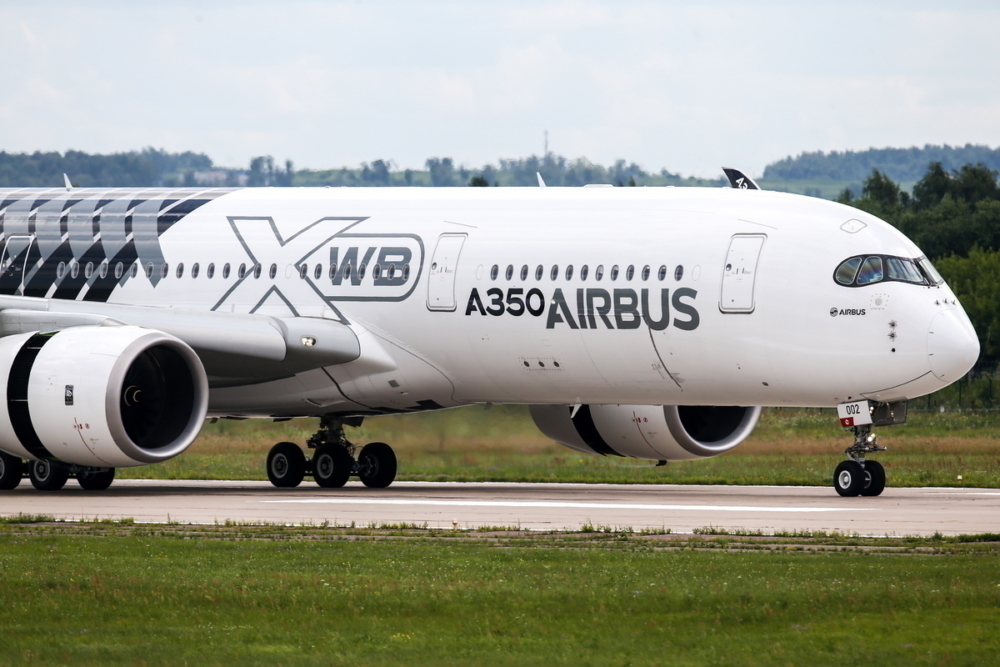



Aircraft construction and assembly
Both Boeing and Airbus often construct aircraft in several locations, with a central production line for final assembly. Airbus was conceived around this concept, with several smaller European manufacturers coming together in 1970 to take on larger US competition. Starting with the Airbus A300, components have always been constructed at several locations around Europe.
Boeing has been more focused on production in the US, with production facilities at Renton and Everett, Wahington, and later in North Charleston, South Carolina. The 787 was originally assembled at Everett (along with all other Boeing widebodies). But a second assembly line was added at North Charleston in 2011 to handle the increased production rate. The 787-10 is produced only in North Charleston, and Boeing is currently moving all 787 production there.




Global production
Boeing significantly increased the level of outsourcing and third-party construction for the 787. Although all final assembly has taken place in North Charleston and Everet, many key components are constructed in other locations and by other companies. This includes:
- The main wings and central wing box – Mitsubishi Heavy Industries, Japan
- Wing trailing edge – Kawasaki Heavy Industries, Japan
- Wingtips – Korean Air, Korea
- Tail and horizontal stabilizer – Alenia Aeronautica, Italy (later changed to Boeing)
- Central fuselage section – Alenia Aeronautica, Italy
- Forward fuselage sections – Spirit AeroSystems, US and Kawasaki Heavy Industries, Japan
- Main landing gear – Kawasaki Heavy Industries, Japan and Messier-Bugatti-Dowty, UK
- Passenger doors – Latécoère, France
- Cargo doors – Saab, Sweden
- Boeing handles the construction of the aft fuselage section and the tail fin.




Using the Dreamlifter
Boeing today has four large fuselage transporters, known as Dreamlifters. This was developed from the 747-400, with a lengthened and expanded fuselage to carry aircraft components. It was introduced for 787 assembly, with components needing to be transported from Japan and Italy to the South Carolina and Washington Boeing factories.
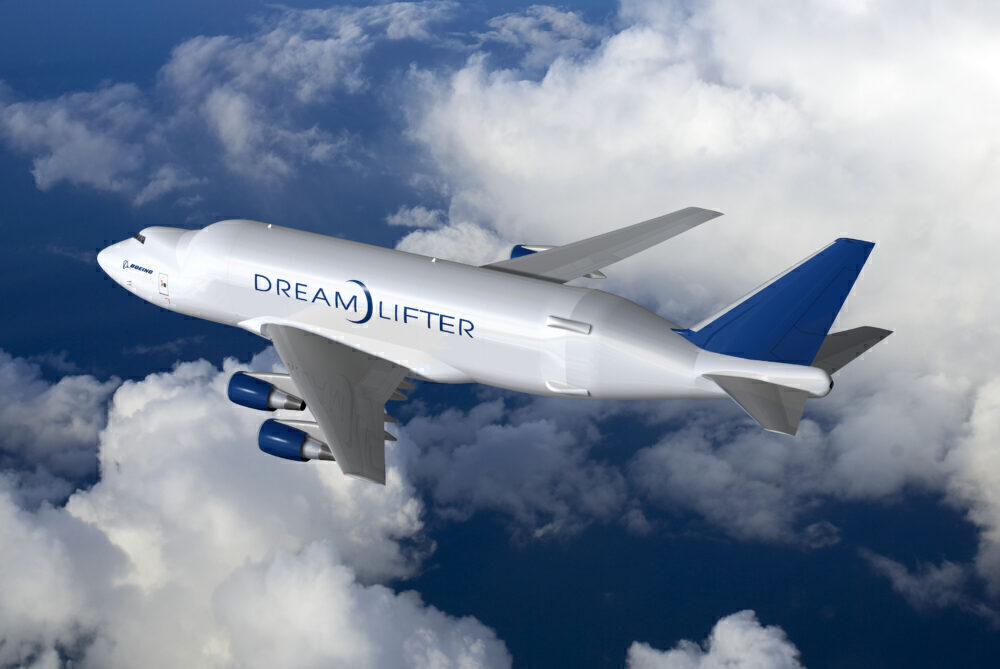



The Dreamlifter can carry the separate fuselage sections and the wings of the 787. It is not large enough for the 787-10 mid-fuselage section. After it is assembled from smaller components in North Charleston, it cannot be flown to Everett – which is why all production moved to North Charleston for that variant.
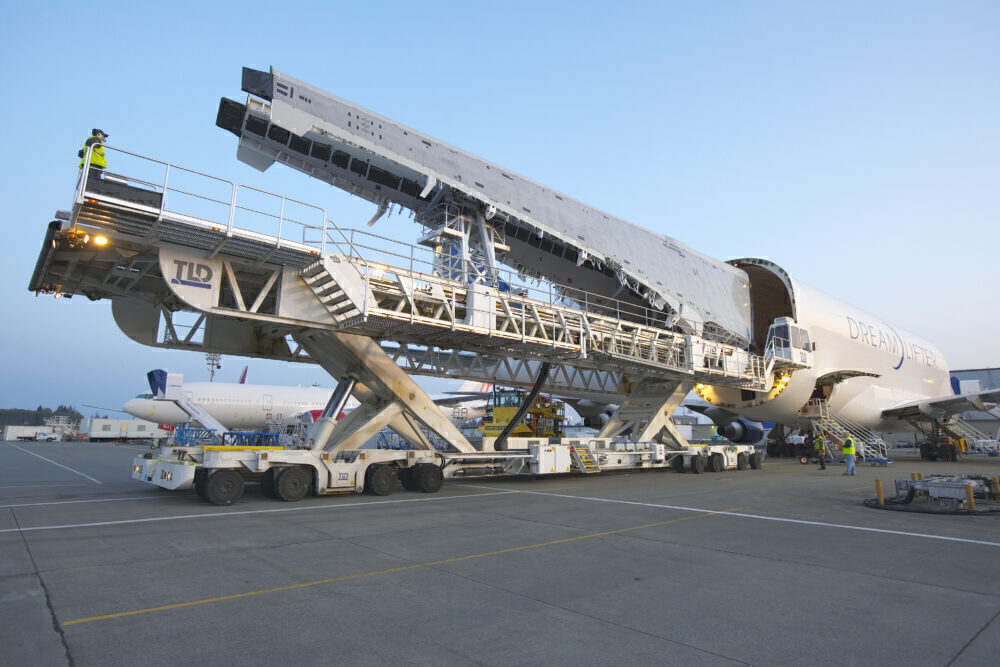



Airbus has used such fuselage transporters for much longer. With its production spread across Europe from the outset, it introduced the Super Guppy aircraft in 1972 (a modified Boeing Stratocruiser) to transport parts for the A300. This was replaced by the larger Beluga (based on the A300) in 1995 and the even larger Beluga XL in 2020. By volume, the Beluga XL is larger than the Dreamlifter, although, with its 747 base, the Dreamlifter can carry a higher payload.
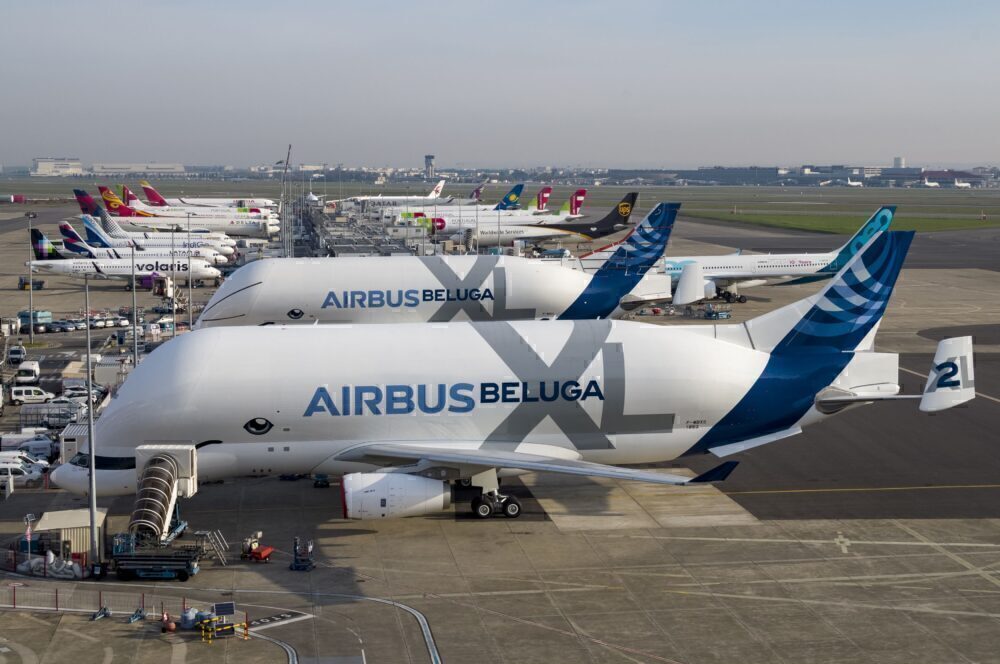



Moving production to Charleston
Boeing announced in October 2020 that it would be consolidating all 787 production to its North Charleston, South Carolina facility in 2021. This came following the reduced demand and slowed production in 2021 and 2021, and it seems likely to stay that way for the foreseeable future. The last 787 at Everett was completed in February 2021.
The Dreamlifters will continue to be used to ferry components from around the world. This had already been a problem with the 787-10, as the Dreamlifter could not carry the larger mid-fuselage sections for final assembly.




Composite material construction
The 787, as we have discussed, is focused on efficiency. One of the main ways this is achieved is with a total re-design of the airframe. It is the first commercial aircraft to rely heavily on composite materials rather than aluminum alloys. Around 50% of the materials used are carbon fiber reinforced plastic and other composites, with only 20% aluminum. 15% is titanium, which is also a metal, but proven to be lower maintenance.
Overall, this gives the 787 a 20% weight reduction compared to conventional construction (according to Boeing). It also reduces the required maintenance of the fuselage due to fatigue and corrosion.
The composite fuselage had a significant influence on 787 construction. Composite structures can be molded into any shape. This has allowed separate entire fuselage ‘barrel’ sections to be made in different locations, rather than aluminum sheets that needed to be bolted together.
You can see this carbon fiber construction in action if you look at the wings as the 787 takes off. The more flexible wings bend upwards and remain this way in flight. This is more efficient (with less drag) and helps performance.
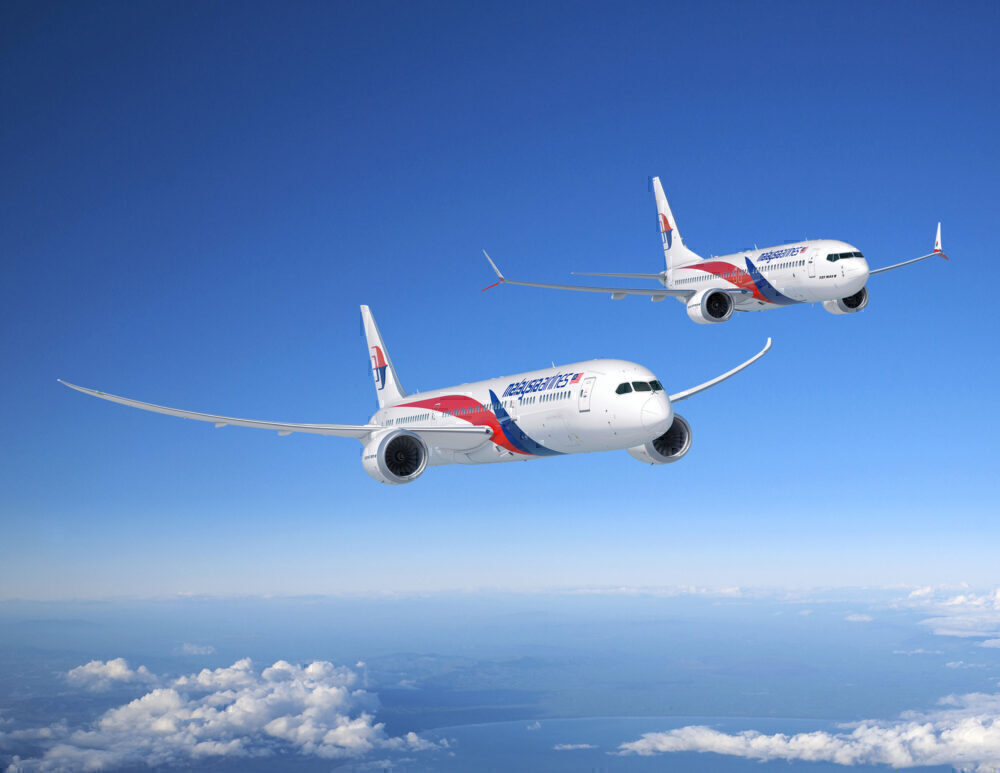



Final assembly in Charleston
Going forward, there will be just one final assembly line in North Charleston, South Carolina. Components are either built at that location or transported there for assembly. For a great look inside the production facility, watch this video from Sam Chui:
There are several separate facilities for the sub-assembly of two different fuselage sections in the North Charleston factory. These are the mid-body section (with the sections from Italy and Japan) and aft-body sections (for the final section of the fuselage and the tail section).
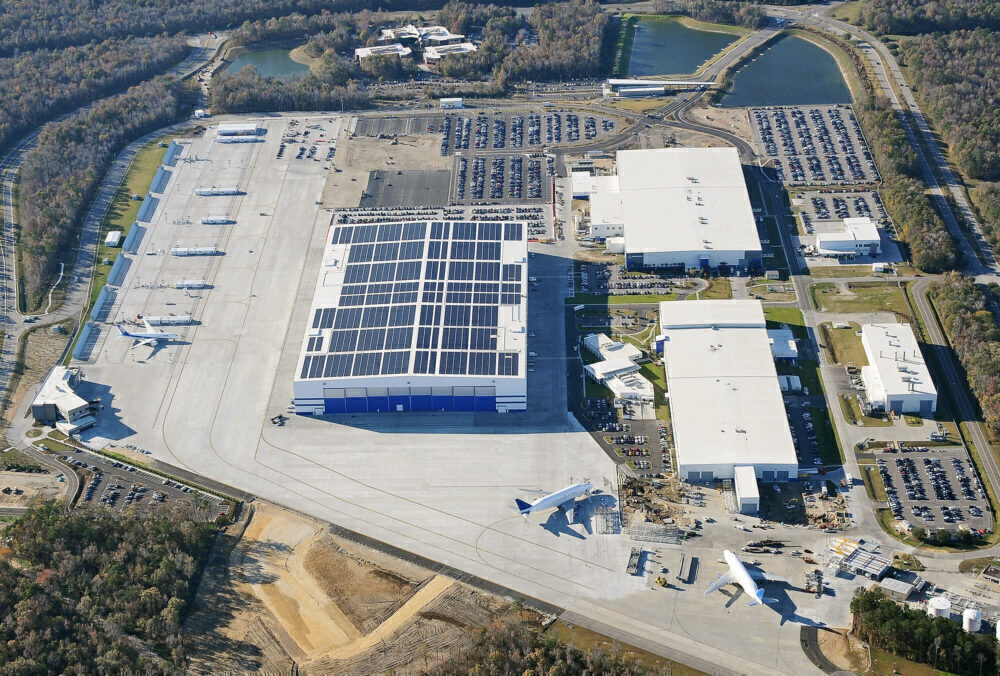



In these facilities, separate sections are joined together. The necessary wiring, ducts, hydraulics, and other equipment are also added to the fuselage sections at this stage. Previously, fuselage sections for the 787-8 and 787-9 from here would be transported to Everett, too, for final assembly.
There is then a further facility known as the Interiors Responsibility Centre. This assembles many of the necessary interior equipment, such as floor and ceiling panels, storage bins, and crew rest facilities.
One main building houses the final assembly line. This can handle up to eight 787s at the same time. It brings together the previously sub-assembled fuselage sections with the wings and tail.
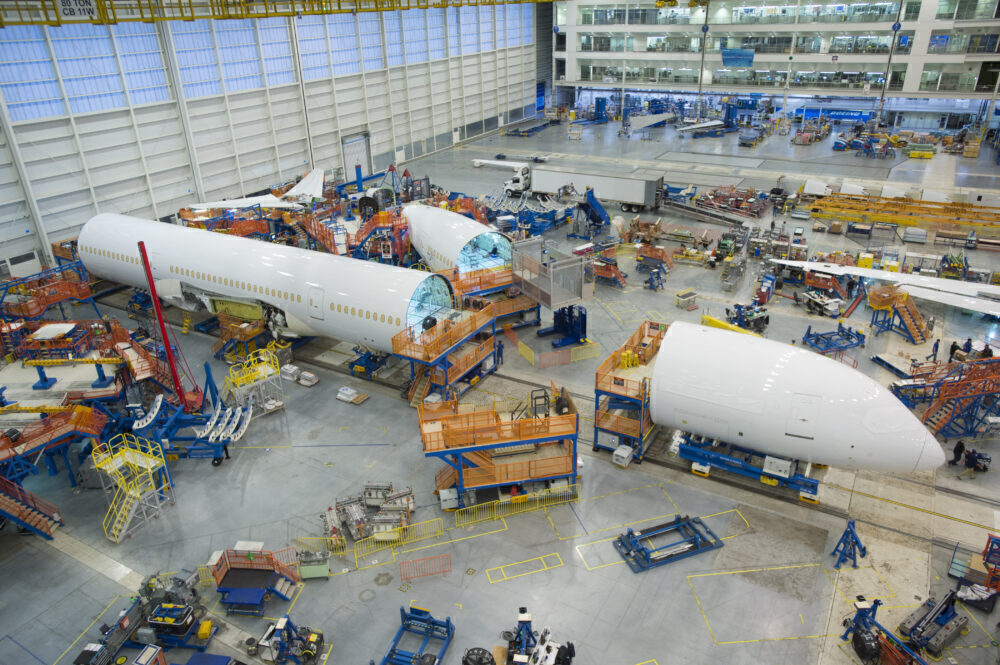



Current 787 production
Production at the North Charleston final assembly line was at 14 aircraft per month in 2019. This has slowed significantly in 2020 and 2021, both with the pandemic and several quality control issues. By the end of 2020, it had fallen to five per month.




There have been several separate issues identified and investigated by the FAA. This includes problems with the joining material (known as shims) used to fill gaps where parts of the fuselage were mated, wider than allowable gaps between components in the horizontal stabilizer, and most recently, issues with decompression panels that separate the cargo area from the passenger area. These issues led to aircraft groundings and inspections and a review of the assembly line.
In March 2021, the first 787 since October 2020 was handed over to a customer. In late April, though, its inventory backlog was at around 100 aircraft. With the issues fixed, Boeing hopes it can deliver these by the end of 2021.
The 787 has proved a popular aircraft with airlines, with its point-to-point abilities and efficient operation. It has not been without its challenges, though, and production lines have been a big part of this. Feel free to discuss the 787 and its construction further in the comments.



